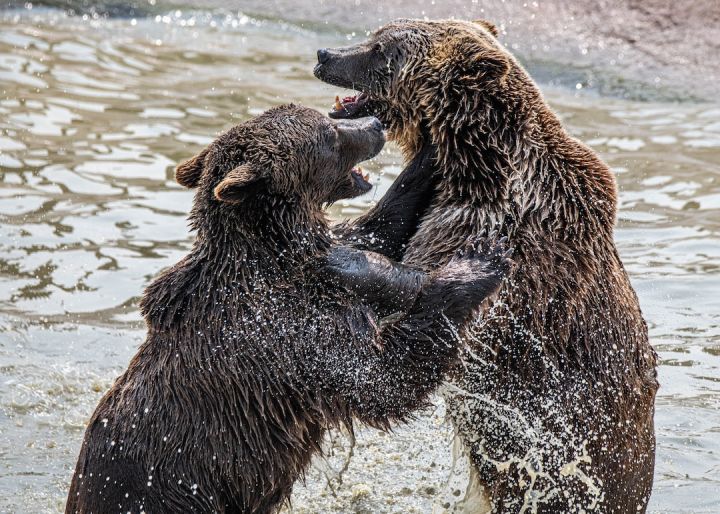How Do Weather Patterns Affect Bears?
Bears are magnificent creatures that have adapted to various environments over the years. One crucial factor that greatly impacts their behavior and survival is weather patterns. In this article, we will explore the ways in which weather patterns affect bears and how they adapt to different climatic conditions.
Hibernation: Surviving the Harsh Winter
During the winter months, bears enter a state of hibernation to conserve energy and survive the harsh conditions. The timing and duration of hibernation are directly influenced by weather patterns, particularly temperature and food availability. In regions where winters are milder and food is more abundant, bears may have shorter hibernation periods. Conversely, in colder areas with limited food resources, bears may hibernate for several months.
Extreme Heat: Seeking Shade and Water
While bears are well-adapted to cold climates, they also face challenges during periods of extreme heat. High temperatures can cause dehydration and exhaustion, forcing bears to seek shade and water sources to cool down. In regions where heatwaves are common, bears may alter their activity patterns, becoming more nocturnal to avoid the scorching daytime temperatures.
Drought: Scarcity of Food and Water
Droughts can have a significant impact on bear populations, particularly in areas where water sources and food supply are limited. Bears rely on vegetation, berries, and other edible plants for sustenance. During periods of drought, these food sources may become scarce, forcing bears to search for alternative food options or venture into human-populated areas in search of sustenance. This can lead to increased human-bear interactions and potential conflicts.
Snowfall: Challenging Travel and Foraging
Snowfall is a natural occurrence in many bear habitats, and while bears are well-equipped to handle cold weather, heavy snowfall can pose challenges. Deep snow makes it difficult for bears to travel long distances and find food. They may have to exert more energy to move through the snow, which can lead to weight loss and reduced survival rates. Additionally, deep snow can bury food sources, making it harder for bears to find nourishment.
Changing Seasons: Preparing for Migration
Bears in certain regions undergo seasonal migrations to find better food sources or seek suitable habitats. Weather patterns play a crucial role in the timing and extent of these migrations. Bears may follow the changing seasons, moving from lower elevations to higher elevations as snow melts and vegetation becomes more abundant. The availability of food and the temperature conditions are key factors that influence the timing and direction of these migrations.
Forest Fires: Destruction of Habitat
Forest fires are a natural part of many ecosystems, but they can have devastating effects on bear populations. Bears rely on forests for shelter, food, and protection. When a forest fire occurs, it can destroy their habitat, leaving them vulnerable and without a home. Additionally, the loss of vegetation due to fires can lead to a scarcity of food, forcing bears to search for sustenance in other areas.
Conclusion: Adapting to a Changing Climate
Bears are highly adaptable creatures, but they face numerous challenges due to changing weather patterns. From hibernation during harsh winters to seeking shade and water during heatwaves, bears exhibit remarkable resilience. However, with the increasing impact of climate change, these weather patterns are becoming more unpredictable and extreme, posing new challenges for bear populations. It is crucial that we continue to protect their habitats, mitigate human-bear conflicts, and work towards reducing the effects of climate change to ensure the long-term survival of these magnificent creatures.






